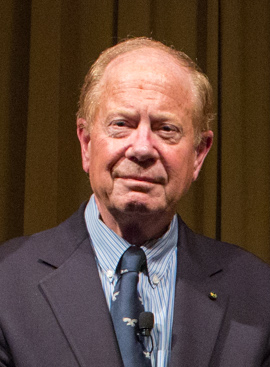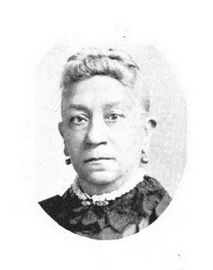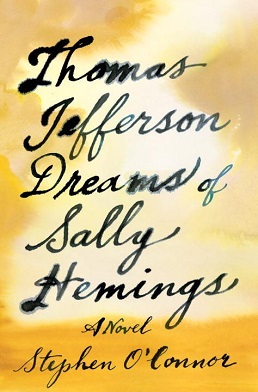Plot summary
The story begins as a historical novel, telling the story of the relationship between Thomas Jefferson and his African-American mistress Sally Hemings, a young woman with a "skin that was too white to be quite black and too black to be quite white." Erickson focuses on the period Jefferson spent in France at the beginning of the French Revolution (in one of the climactic scenes of the first part there is a nightmarish description of the storming of the Bastille). After "Thomas" and Sally become lovers the couple return to the United States, with Hemings remaining a slave even as her children are set free; this agreement between the lovers seems to have a powerful symbolic value for the rest of the novel, as "it was the nature of American freedom that he was only free to take pleasure in something he possessed."
An abrupt change in the narrative finds Hemings leaving Jefferson after he is elected President of the United States. In a departure from factual history, Hemings travels West, reaching a territory where Native Americans have never seen black or white people. There, in a room where a murder has taken place, Sally wakes in an alternate present when the United States have disappeared; the action is set in Aeonopolis, a strange city under harsh theocratic rule and built near a volcano on the West Coast of North-America (though there is no overt indication about the exact position of the city). Sally meets an Afro-American police detective named Wade who sets her free because he doesn't believe she is guilty of the murder, though the priests want her prosecuted. After a dramatic confrontation Wade deserts the police force and hides in the Arboretum, a vast subterranean construct beyond the jurisdiction of the Church and police where the illegal activity centers on a nightclub called Fleurs d'X and Wade becomes fascinated by a dancer named Mona.
The novel recounts Mona's relation with Wade, and Sally's relation with one of the archivists of Church Central, Etcher. The atmosphere is dream-like, both in the part of the novel focusing on Wade and in the longer part where the protagonist is Etcher. Etcher's tormented love story with Sally ends with her death, which takes place in an Icy region north of Aeonopolis where she and Etcher have escaped the police and church. After Sally's death the narration abruptly moves back to Paris and the present, where a French mathematician named Seuroq is stricken by unbearable grief for the death of his wife Helen; Seuroq begins to research a different concept of time, perhaps hoping to invert its flux. What he discovers instead is the existence of an extra day, called Jour d'X or X-Day, between December 31, 1999, and January 1, 2000.
Following this short episode the narrative focuses on a character named "Erickson" travelling towards Berlin in 1998. The city he reaches is not the real Berlin of the 1990s but an alternate version of the city which has been abandoned by many of its inhabitants notwithstanding the fall of the Wall, and which barely survives an unspecified disaster (while Erickson's home city, Los Angeles, has been obliterated by an unspecified Cataclysm, possibly an earthquake). Erickson is killed by a young nazi skinhead, Georgie Valis, the son of an East German professor who has attempted to escape to West Berlin; Georgie uses Erickson's passport to reach the United States and hitchhikes toward its ravaged West Coast. There he will meet in the ruins of Los Angeles Thomas and Sally, and this meeting will move him to the alternate universe of Aeonopolis, where he will reach the Fleurs d'X night club.

Thomas Jefferson was an American statesman, diplomat, lawyer, architect, philosopher, and Founding Father who served as the third president of the United States from 1801 to 1809. Among the Committee of Five charged by the Second Continental Congress with authoring the Declaration of Independence, Jefferson was the document's primary author. Following the American Revolutionary War and prior to becoming president in 1801, Jefferson was the first U.S. Secretary of State under George Washington and then the nation's second vice president under John Adams.
Sarah "Sally" Hemings was an enslaved woman with one-quarter African ancestry owned by president of the United States Thomas Jefferson, one of many he inherited from his father-in-law, John Wayles.

Joseph John-Michael Ellis III is an American historian whose work focuses on the lives and times of the Founding Fathers of the United States. His book American Sphinx: The Character of Thomas Jefferson won a National Book Award in 1997 and Founding Brothers: The Revolutionary Generation won the 2001 Pulitzer Prize for History. Both these books were bestsellers.
Randolph Jefferson was the younger brother of Thomas Jefferson, the only male sibling to survive infancy. He was a planter and owner of the Snowden plantation that he inherited from his father. He served the local militia for about ten years, making captain of the local militia in 1794. He also served during the Revolutionary War.
Martha Skelton Jefferson was the wife of Thomas Jefferson. She served as First Lady of Virginia during Jefferson's term as governor from 1779 to 1781. She died in 1782, 19 years before he became president.

Martha "Patsy" Randolph was the eldest daughter of Thomas Jefferson, the third president of the United States, and his wife, Martha Wayles Skelton Jefferson. She was born at Monticello, near Charlottesville, Virginia.

Clotel; or, The President's Daughter: A Narrative of Slave Life in the United States is an 1853 novel by United States author and playwright William Wells Brown about Clotel and her sister, fictional slave daughters of Thomas Jefferson. Brown, who escaped from slavery in 1834 at the age of 20, published the book in London. He was staying after a lecture tour to evade possible recapture due to the 1850 Fugitive Slave Act. Set in the early nineteenth century, it is considered the first novel published by an African American and is set in the United States. Three additional versions were published through 1867.

Jefferson in Paris is a 1995 historical drama film, directed by James Ivory, and previously entitled Head and Heart. The screenplay, by Ruth Prawer Jhabvala, is a semi-fictional account of Thomas Jefferson's tenure as the Ambassador of the United States to France before his presidency and of his alleged relationships with Italian-English artist Maria Cosway and his slave, Sally Hemings.
Eston Hemings Jefferson was born into slavery at Monticello, the youngest son of Sally Hemings, a mixed-race enslaved woman. Most historians who have considered the question believe that his father was Thomas Jefferson, the third President of the United States. Evidence from a 1998 DNA test showed that a descendant of Eston matched the Jefferson male line, and historical evidence also supports the conclusion that Thomas Jefferson was probably Eston's father. Many historians believe that Jefferson and Sally Hemings had six children together, four of whom survived to adulthood. Other historians disagree.

Lerone Bennett Jr. was an African-American scholar, author and social historian who analyzed race relations in the United States. His works included Before the Mayflower (1962) and Forced into Glory (2000), a book about U.S. President Abraham Lincoln.
The Jefferson–Hemings controversy is a historical debate over whether there was a sexual relationship between the widowed U.S. President Thomas Jefferson and his slave and sister-in-law, Sally Hemings, and whether he fathered some or all of her six recorded children. For more than 150 years, most historians denied rumors from Jefferson's presidency that he had a slave concubine. Based on his grandson's report, they said that one of his nephews had been the father of Hemings' children. Before changing his mind following the results of DNA analysis in 1998, Jefferson's biographer Joseph J. Ellis had said, "The alleged liaison between Thomas Jefferson and Sally Hemings may be described as the longest-running miniseries in American history." In the 21st century, most historians agree that Jefferson is the father of one or more of Sally's children.

James Madison Hemings was the son of the mixed-race enslaved woman Sally Hemings and her enslaver, President Thomas Jefferson. He was the third of her four children to survive to adulthood. Born into slavery, according to partus sequitur ventrem, Hemings grew up on Jefferson's Monticello plantation, where his mother was enslaved. After some light duties as a young boy, Hemings became a carpenter and fine woodwork apprentice at around age 14 and worked in the joiner's shop until he was about 21. He learned to play the violin and was able to earn money by growing cabbages. Jefferson died in 1826, after which Sally Hemings was "given her time" by Jefferson's surviving daughter Martha Jefferson Randolph.

Sarah Jane Woodson Early, born Sarah Jane Woodson, was an American educator, black nationalist, temperance activist and author. A graduate of Oberlin College, where she majored in classics, she was hired at Wilberforce University in 1858 as the first black woman college instructor, and also the first black American to teach at a historically black college or university (HBCU).

John Wayles Jefferson, was an American businessman and Union Army officer in the American Civil War. He is believed to be a grandson of Thomas Jefferson; his paternal grandmother is Sarah (Sally) Hemings, Jefferson's mixed-race slave and half-sister to his late wife.

Barbara Chase-Riboud is an American visual artist and sculptor, bestselling novelist, and award-winning poet.
Elizabeth Hemings was an enslaved mixed-race woman in colonial Virginia. With her master, planter John Wayles, she had six children, including Sally Hemings. These children were three-quarters white, and, following the condition of their mother, they were enslaved from birth; they were half-siblings to Wayles's daughter, Martha Jefferson. After Wayles died, the Hemings family and some 120 other enslaved people were inherited, along with 11,000 acres and £4,000 debt, as part of his estate by his daughter Martha and her husband Thomas Jefferson.
Yvonne L. Andrews, known professionally as Tina Andrews, is an American actress, television producer, screenwriter, author and playwright. She played Valerie Grant in the NBC soap opera series Days of Our Lives from 1975 until 1977.
Harriet Hemings was born into slavery at Monticello, the home of Thomas Jefferson, third President of the United States, in the first year of his presidency. Most historians believe her father was Jefferson, who is now believed to have fathered, with his slave Sally Hemings, four children who survived to adulthood.
Sally Hemings has been represented in the media in popular culture due to her association with Thomas Jefferson. She has been portrayed in films and the inspiration for novels, plays and music.

Thomas Jefferson Dreams of Sally Hemings is a 2016 historical fiction novel by American writer Stephen O'Connor. The novel depicts the relationship between Thomas Jefferson, third President of the United States, and Sally Hemings, his slave and sister-in-law. The depiction, which portrayed the relationship as consensual and romantic, was the focus of controversy due to questions about Hemings's status as a slave and her age difference with Jefferson.











